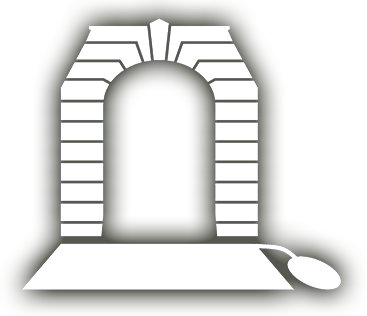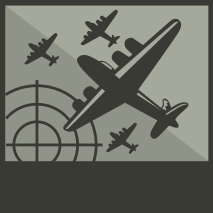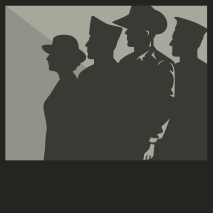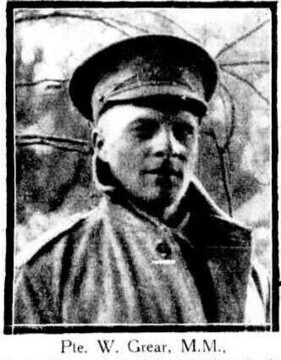
GREAR, William
| Service Number: | 2181 |
|---|---|
| Enlisted: | 23 February 1916 |
| Last Rank: | Lance Corporal |
| Last Unit: | 45th Infantry Battalion |
| Born: | Manchester, England, 1889 |
| Home Town: | Bowral, Wingecarribee, New South Wales |
| Schooling: | Not yet discovered |
| Occupation: | Farmer |
| Died: | Died of wounds, Belgium, 14 October 1917 |
| Cemetery: |
Lijssenthoek Military Cemetery Plot XXI, Row C, Grave 20A. |
| Memorials: | Australian War Memorial Roll of Honour |
World War 1 Service
| 23 Feb 1916: | Enlisted AIF WW1, Private, 2181, 45th Infantry Battalion | |
|---|---|---|
| 22 Aug 1916: | Involvement Private, 2181, 45th Infantry Battalion , Third Ypres, --- :embarkation_roll: roll_number: '19' embarkation_place: Sydney embarkation_ship: HMAT Wiltshire embarkation_ship_number: A18 public_note: '' | |
| 22 Aug 1916: | Embarked Private, 2181, 45th Infantry Battalion , HMAT Wiltshire, Sydney | |
| 14 Oct 1917: | Involvement Lance Corporal, 2181, 45th Infantry Battalion , Third Ypres, --- :awm_ww1_roll_of_honour_import: awm_service_number: 2181 awm_unit: 45 Battalion awm_rank: Lance Corporal awm_died_date: 1917-10-14 |
Help us honour William Grear's service by contributing information, stories, and images so that they can be preserved for future generations.
Add my storyBiography contributed by Stephen Brooks
William was the son of John and Alice Grear and was born in England during 1889. He came out to Australia in 1911, with his family, following the death of his father, and he and his brothers took up farming near Bowral, New South Wales.
William’s younger brother James was among the first to enlist, and was an original member of the 1st Battalion. He was killed in action at Gallipoli on 10 May 1915. William and two other brothers then decided to enlist.
William joined up with 45th Battalion AIF and arrived on the Western Front during January 1917. He was with his unit for only a few weeks before they attacked Stormy Trench on 21 February 1917.
William was awarded a Military Medal for the action. His recommendation states, “For gallant conduct during an attack upon German strong point and trench at Gueudecourt on the morning of 21st February, 1917. The assault was delivered under cover of a barrage of Stokes guns. The position was protected by strong wire and before the Stokes had finished firing Private GREAR dashed forward with Sergeant CLARE and laid blankets across the wire to facilitate the progress of the storming party. He then returned for more blankets which he placed in position. Subsequently he rendered valuable assistance in the operations along the trench.”
Grear was promoted to lance corporal in early June 1917. He was wounded in action during the Battle of Messines and evacuated to England for treatment. He returned to his unit three months later.
During heavy fighting at Passchendaele on 12 October 1917 Grear volunteered for stretcher bearing duties alongside six other men, when they came under fire from enemy artillery. William Grear was mortally wounded. An eye witness stated “We were alongside the sapper lines in the afternoon bringing in the wounded, six of us together. A shell burst and hit the lot of us. We laid out there till 10 o’clock in the morning on 13 October. Grear was hit in each thigh. We bound him up and he was conscious. We were picked up and taken to the advanced dressing station … Grear was then in a low condition and the doctor said he could not last”.
William Grear died of his wounds the following day, on 14 October 1917, and was buried nearby in Lijssenthoek Military Cemetery.
His other two brothers 18465 Driver Charles Wilfred Grear and 18466 Gunner Harry Grear were both awarded Commander in Chiefs Congratulatory Cards for their work with the 7th Field Artillery Brigade in late 1918. Another brother, Stoker John Grear, served with the Royal Navy at the Battle of Jutland. They all survived the war.









